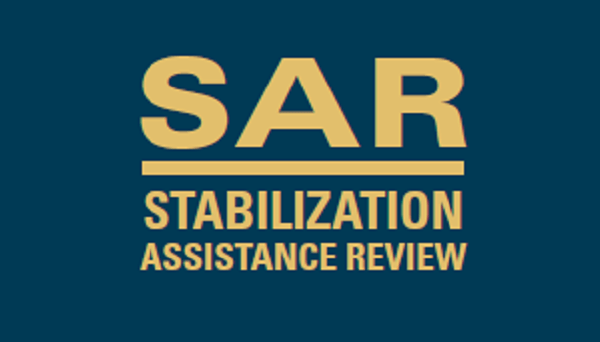
Implementing the Stabilization Assistance Review
“Sacrificing Responsiveness for Cost Savings?”
In June 2018 representatives from the Department of State (DOS), United States Agency for International Development (USAID), Department of Defense (DoD), academia, and other organizations met in Washington, DC and conducted a Stabilization Symposium that discussed the Stabilization Assistance Review (SAR) and its recommendations. The debate was lively and informative, and it uncovered a friction point. This point was the speed at which DoD usually desires stabilization activities to occur, vice the projected speed the Stabilization Assistance Review would suggest stabilization activities will occur in the future. The potential for a sizable gap exists, but this gap can be mitigated.

The Stabilization Assistance Review states “…there is no appetite to repeat large-scale reconstruction efforts, therefore our engagements must be more measured…”, and offers approaches to stabilization activity execution. These approaches do not encourage speed, rather they suggest a slower, more deliberate pace that reduces the cost to the United States Government (USG). The approaches emphasized in the SAR include: “burden sharing” amongst both international community and local actors; that stability activities should “start with small, short-term projects and scale up cautiously”; and that foreign assistance should be “layered and sequenced” allowing for analysis of completed activities to determine if these activities are achieving the desired effect before beginning follow-on activities. These approaches would reduce costs to the USG, but have the potential to jeopardize associated military gains.
We must also consider that the nature of the environment within which these stabilization activities will occur are often “non-permissive”. Historically our DOS and USAID colleagues have experienced significant challenges working in these less secure and more dangerous non-permissive environments. This also contributes to potential delays in stabilization activities.
To compensate for these issues, the USG must be more holistic in its approach to stabilization. We must do a better job of leveraging all actors operating within a country who are or who can provide positive stabilization effects to compensate for times when DOS and USAID either cannot or will not execute stabilization activities, and to allow for a slower USG pace.
We also need a significant shift in how the three organizations work closer together to develop strategies and plans. Each organization must fully understand what the others are trying to do, and just as importantly – why. At the same time each organization should be able to advocate for their equities in the other’s strategies and plans. This will enable greater nesting of strategies and plans, ensuring they are all complementary, and allows for more realistic programs of stabilization activities. This planning must be continuous and occur at all levels.
Constant assessment and feedback must be a part of this process, which lends itself to improved responsiveness and agility, while integrating and synchronizing the various stabilization actors who can also contribute. We must constantly view and assess these strategies and plans against changes in the environment. This allows us to manage change at near the pace of the change itself.
The USG does not have to sacrifice responsiveness in stabilization activity execution to lower costs, but to be successful in this new stabilization joint venture DOS, USAID, and DoD must become more holistic in our approach to stabilization and the various actors who can contribute positive stabilization effects, and improve our processes for developing our strategies and plans to ensure these actors are integrated and synchronized, and that these strategies and plans are more complementary, realistic, responsive and agile.
Author: Charles Barham is a retired U.S. Army Colonel with 29 years of service (1981-2010). He also served for four years as a Department of the Army Civilian Management and Program Analyst in the Afghanistan/Pakistan Hands Program (2010-2014). He currently serves as a Department of the Air Force Civilian Management and Program Analyst at USCENTCOM in an Interagency Planner capacity.
He served for more than three years in Afghanistan as; Assistant Director of the Police Reform Directorate, Combined Security Transition Command – Afghanistan 2006-2007, Senior Socioeconomic Advisor in HQ ISAF-DCOS/STAB under Generals David Petraeus and John Allen 2011, as Deputy Director of the NATO/Afghan Transformation Task Force, HQ ISAF under General Joseph Dunford 2013, and as a Senior Planning, Programing and Budgeting Advisor to the Afghan National Army Special Operations Command.
He has served for over six years in HQCENTCOM in positions including Senior Socioeconomic Advisor and Interagency Planner. He has a Bachelor of Science in Business Administration from the University of Richmond, a Master of Business Administration from Oklahoma City University, and a Master of Strategic Studies from the U.S. Army War College.